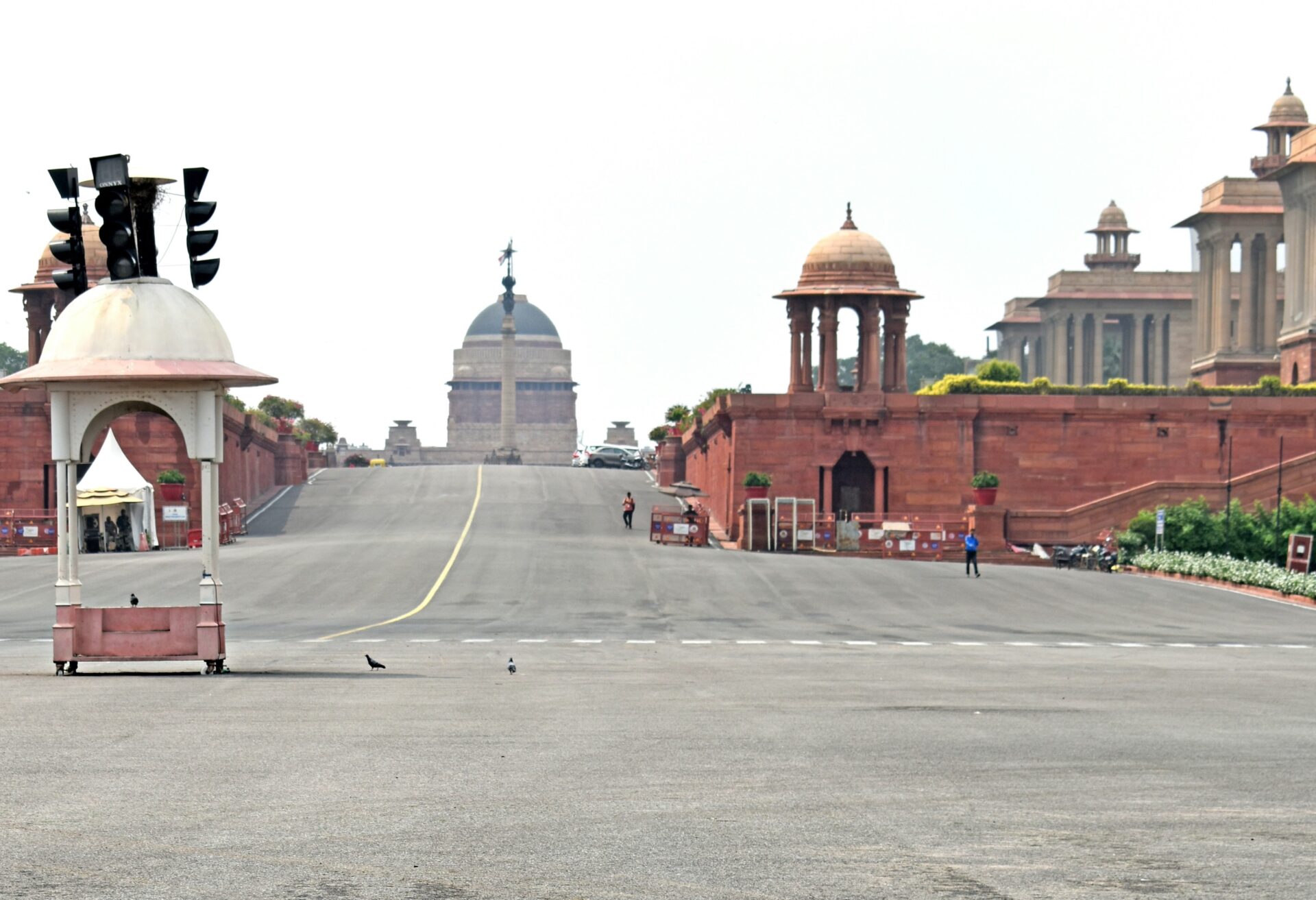Earlier this week, US President Joe Biden and Chinese President Xi Jinping had a phone call in which they discussed several contentious issues including fighting narcotics production, China’s support of Russia during the war in Ukraine, the conflict in the Middle East, the Houthi rebels attacks on commercial vessels, and the Taiwan conflict. The call followed Xi’s meeting with US business leaders last week, when the Chinese premier attempted to bolster investment in China, and Xi’s visit to the United States in November 2023. The various dialogues show the building rapprochement between the two countries following earlier tensions exacerbated by Nancy Pelosi’s 2022 visit to Taiwan, and the Chinese spy balloon episode.
These engagements resumed at a time when Biden canceled a planned visit to India’s Republic Day celebrations along with the postponed QUAD summit. The US has also continued to adopt a stern outlook over India’s involvement in the assassination bid against Gurpatwant Singh Pannun, a US national and Sikh separatist.
Considering these developments, it can be argued that the US and China are making a formal attempt to “manage” their ties in such a way that cooperation coexists with conflict in the Indo-Pacific, and that the US relationship with India — despite continued momentum in defense ties — requires a fair bit of course correction. Moreover, these developments suggest that despite the US viewing India as a strategic bulwark against China, the India-US bilateral partnership cannot rely on countering the perceptible Chinese threat in the Indo-Pacific alone. India will have to focus on both traditional and non-traditional security areas like space, Artificial Intelligence, and technology to strengthen its enduring partnership with the US.
The China-India-US Imbroglio
Over the last decade, India and the United States have emerged as close allies in South Asia and the Indo-Pacific as China has attempted to change the “rules based international order” while expanding its naval and maritime influence in the South China Sea and the Indo-Pacific. China’s actions have brought India and the US closer. In 2016 the US designated India a “Major Defense Partner” and has continued to facilitate military sales, calling the country “vital” for a “shared vision for a free and open Indo-Pacific.”
The strengthening US-India ties came when Chinese incursions increased considerably on India’s border especially in the crises in Doklam in 2017 and Galwan in 2020. The two sides have also signed the four foundational agreements in recent years that the US deem essential to conduct defense trade with any partner or ally country. India also recently bought MQ 9B drones and the FE- 414 engines — crown jewels of American technology — to manage the Chinese threat along its terrestrial and maritime borders and improve Intelligence, Surveillance and Reconnaissance (ISR) capabilities.
However, while the US is keen to assist India in balancing the Chinese threats, the US is reticent for the crisis to escalate to a war that could involve them. Just as the US is assessing the extent of support India could offer in a potential Taiwan contingency, India too is keen to evaluate the level of reciprocal support that the US could offer in the event of a crisis with China on its borders.
This dilemma is at the heart of the India-US bilateral relationship today. In Foggy Bottom and Raisina Hill, both sides ponder the nature of reciprocal support that either could get in the advent of a real conflict.
Moving Ahead: Advantage China?
In light of these uncertainties, the US will attempt to manage its relationship with China and build its ties with India simultaneously. India will have to remain cognizant of this fact as it also plays a balancing game: navigating its ties with both the US and Russia in a bid to maintain its strategic autonomy and remain “multi-aligned.” The US, meanwhile, will attempt to wean India away from Russia despite India’s age-old partnership with Moscow that has seen the latter supporting India on contentious issues like Kashmir at the United Nations.
Interestingly, in this imbroglio, China will have the advantage, at least in the short term.
China will continue to call the shots vis-à-vis its ties with Washington as the Biden administration would like to have a modicum of better ties with Beijing to present to its domestic electorate before the upcoming 2024 elections. Biden’s call to assist China in its economic recovery and the US’s wish to keep its strategic diplomatic engagements through economic integration at multiple levels with the Chinese attest to this fact.
India will have to closely watch the unfurling events as Beijing and Washington engage each other. While a tight embrace between the US and China is unlikely considering the plethora of unresolved issues — ranging from Taiwan to the freedom of navigation and overflight, trade wars, semiconductors, access to resources, and human rights abuses on the part of the Chinese continue to limit the scope of the relationship — the US’s conciliatory approach towards China may harm Indian interests.
China is India’s next-door neighbor and India faces an imminent threat from the Chinese.
India and China are geopolitical rivals and China has increased its footprint in India’s strategic backyard of South Asia in recent years. In this regard, among many controversial projects.
Managing China’s Influence
China is pursuing the “String of Pearls” Project in the region — with the Chinese building bases with potential for dual-use in strategic ports like Gwadar, Pakistan, Hambantota, Sri Lanka, and Chittagong, Bangladesh among others potentially encircling India. China’s all-weather partnership with Pakistan has made the latter a supplicant state under China’s Belt and Road Initiative. Sri Lanka, India’s southern neighbor, is also entrapped in debt diplomacy after it leased out the port of Hambantota to China for 99 years. Moreover, the strategically important island of Maldives has also extended its security partnership with China, with Beijing offering “non-lethal” military weapons to Malé.
India is therefore keen to manage China’s growing influence in South Asia and potentially views Washington as an ally in this endeavor.
China will continue balancing its multiple relationships while pursuing its goals: engaging the US while supporting Russia in the ongoing war with Ukraine, and pushing for India to acquiesce to the idea of a China-led South Asia — all of which falls under the umbrella of Tianxia, the vision of a Chinese world order.
Intricate Entanglement
India will have to be a careful observer of these developments as it keeps the cash on defense sales flowing while addressing the US’s concerns associated with the Pannun assassination attempt. Although the India-US relationship has broadened and deepened in recent years with the growing defense ties, the structural impediments remain as India continues to navigate the US regulatory measures like International Traffic in Arms Regulations (ITAR).
While the India-US relationship extends from the “seas to the stars,” India will have to get the basics right to ensure that enduring ties with New Delhi continue to receive bipartisan support in Washington and so that Washington’s attempted rapprochement with Beijing does not isolate New Delhi. While engagement at the bilateral level will remain the crux of the relationship, India could potentially strengthen its position within multilateral fora like the QUAD, I2U2, and the Combined Maritime Forces through support to US initiatives to enable more US support vis-à-vis China. India’s handling of the pirates in the Red Sea is an example of India stepping up to deal with mutually relevant concerns. To ensure more convergence with the US in the maritime domain, India could also join Operation Prosperity Guardian, the US-led multinational coalition designed to fight the Houthi rebels.
Overall, the dance between the US, China, and India remains an intricate entanglement, and no one wants to trip. Geopolitical considerations will continue to dominate the political thinking and decision-making of these nations in the years to come.





















